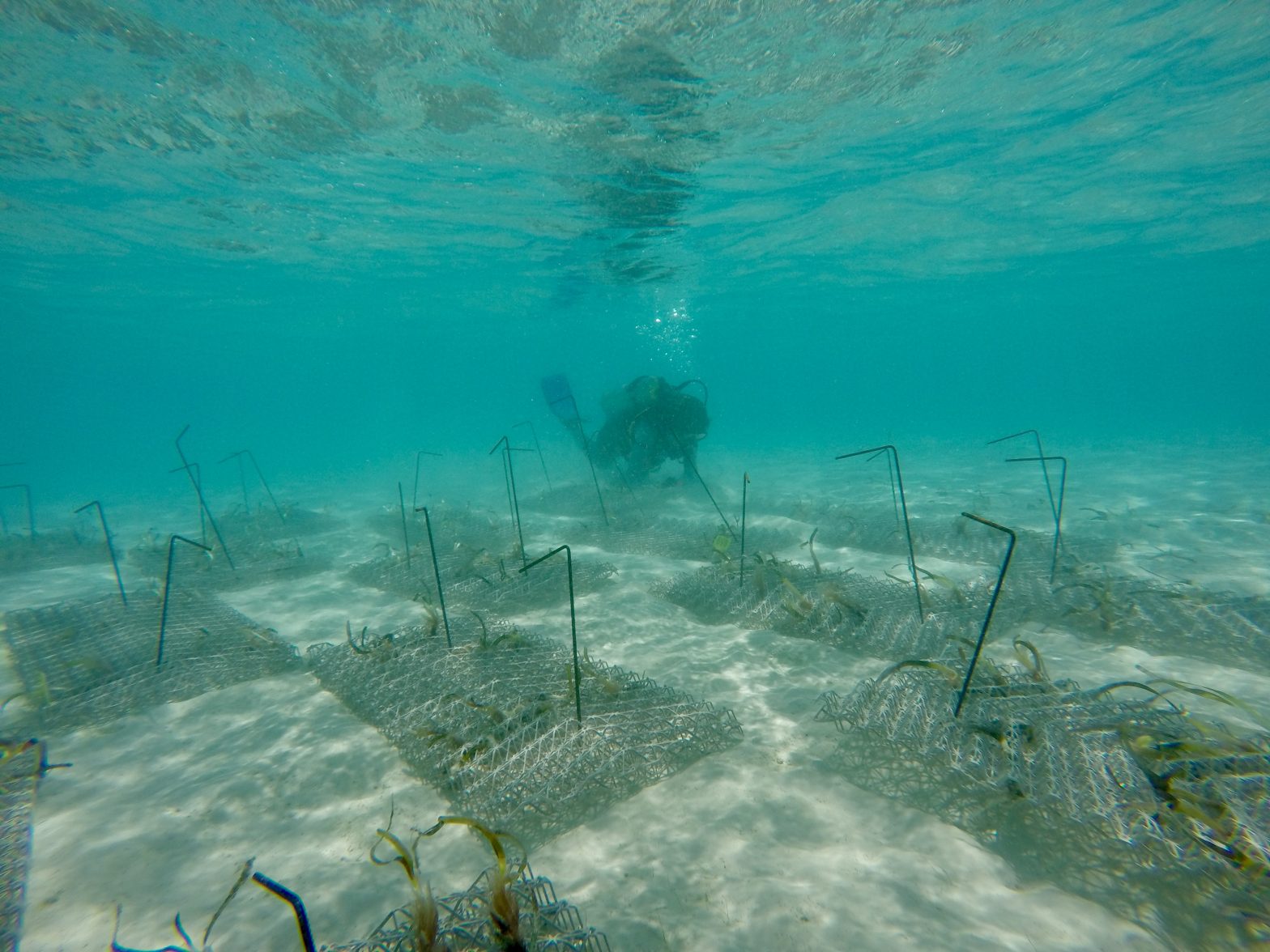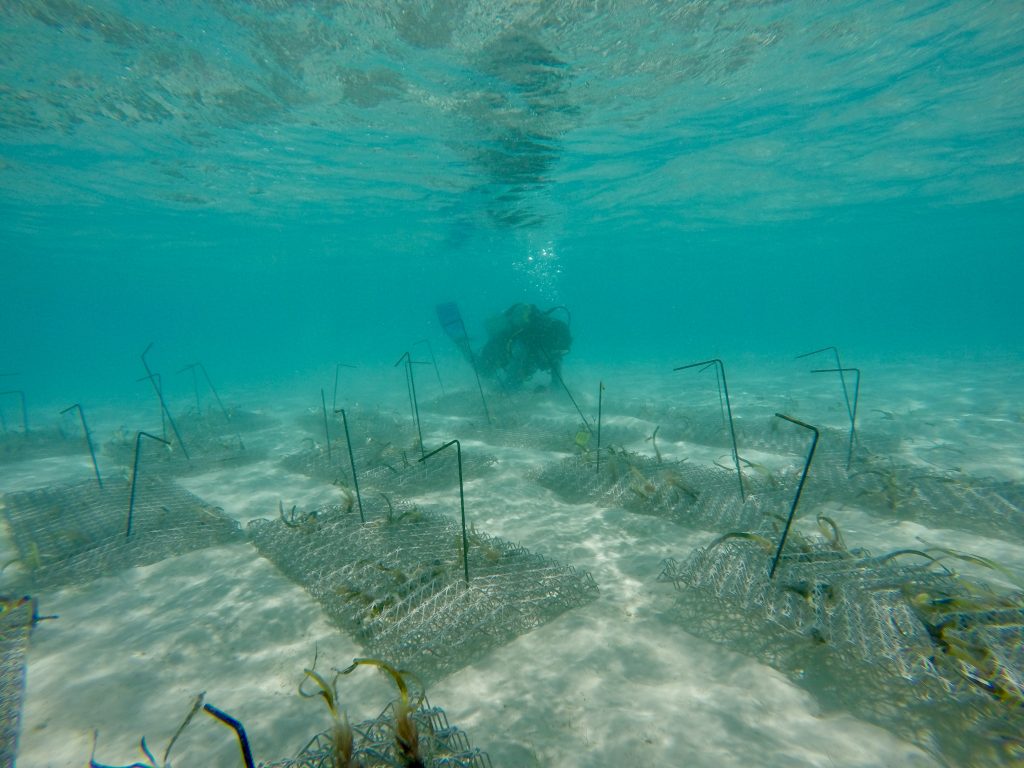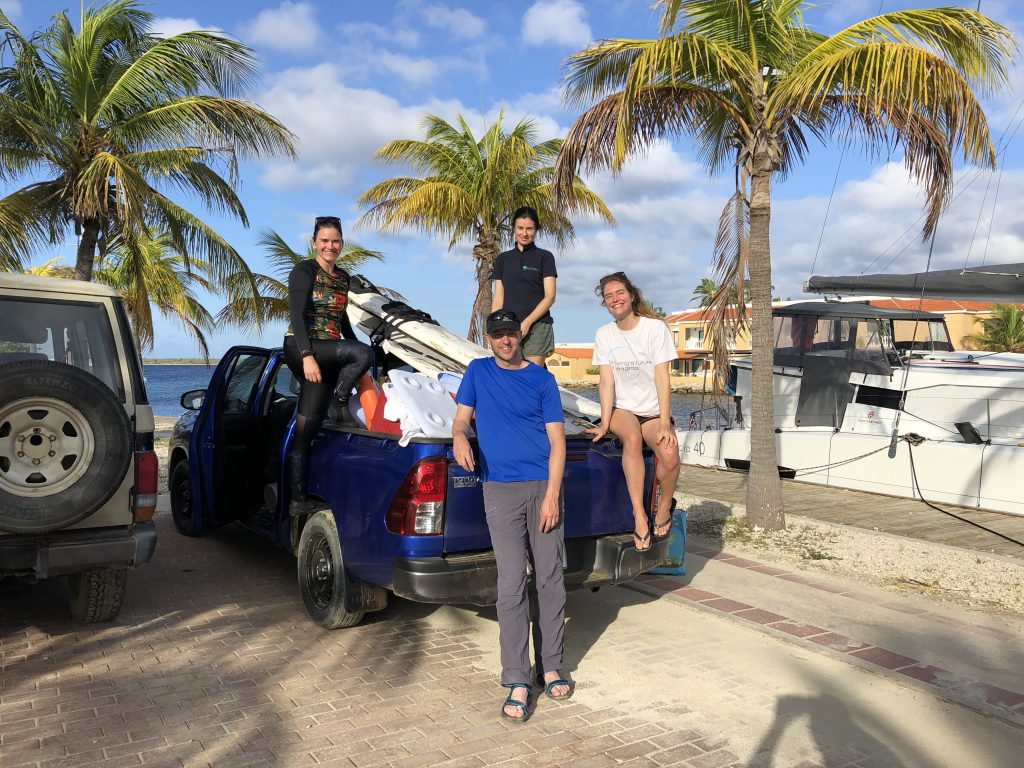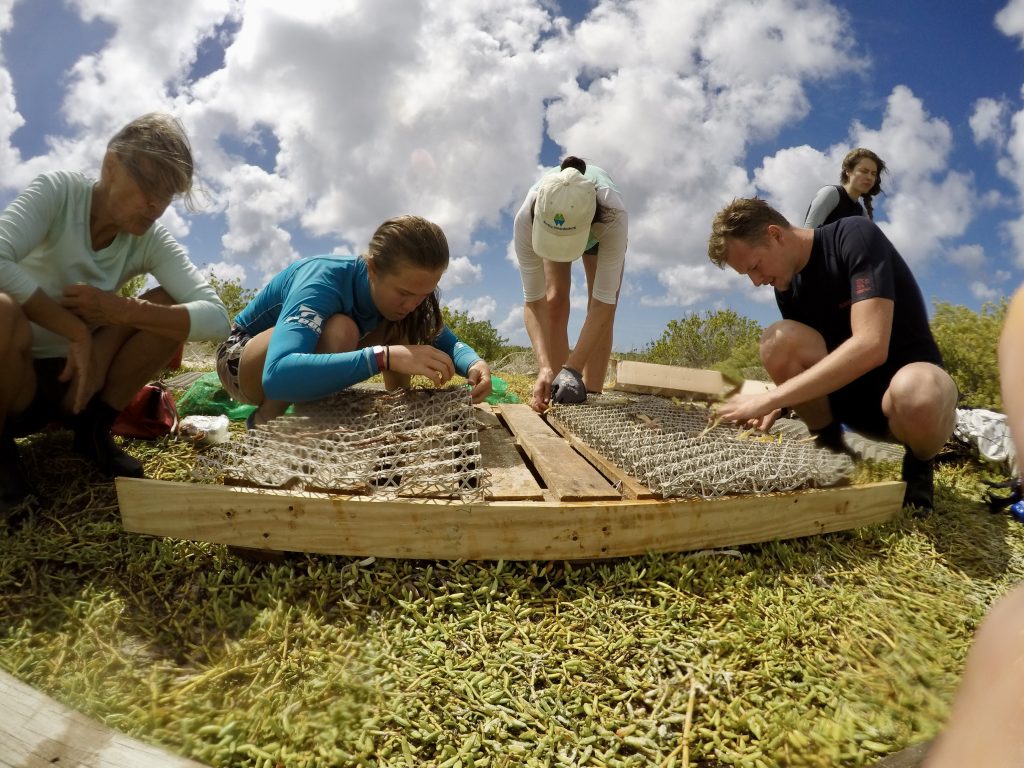Seagrass and Mangroves on Bonaire can use a helping hand. Water quality, tourists (trampling), Sargassum tides and more, have caused rapid decline of seagrasses and mangroves. Based on results from an earlier pilot, last week we launched a larger scale seagrass restoration project to help counter this decline. And also set up pilots to test the use of a new method for mangrove restoration alongside other ongoing methods. We used biodegradable mats that need only a little amount of donor material. The structure of these mats stabilize the sediment for the young plants to facilitate settlement, mimicking the natural effect of nature root mats.
We also celebrated our new paper here on context dependence of this restoration technique and could directly put this new knowledge into practice while selecting the restoration sites together with some of the co-authors. And learned from the brilliant work that the mangrove maniacs are doing at the island. It was real fun, and energizing. In the end contributing to nature conservation is often what you do it for as a scientist.
Emergency funding is through the Dutch ministry of Nature and the environment, and contributions of BESE-products® Mangrove Maniacs Bonaire STINAPA Bonaire , WUR
Wageningen Environmental Research NIOZ Royal Netherlands Institute for Sea Research with Sabine Engel Jessica Johnson Karin Didderen Tjisse Van der Heide
As we speak Fee Smulders Anniek Vos and Shamyi L. Are monitoring the the site to see how the plants are doing.
New paper on context dependence (Biological communications 2021) : https://authors.elsevier.com/sd/article/S0006-3207(21)00425-0
Pilot (Nature communications 2020): https://www.nature.com/articles/s41467-020-17438-4






